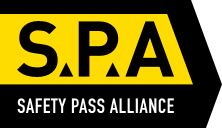Waste company in court over worker’s death
- Date:
- 16 March 2015
A waste management company has been ordered to pay a total of £265,000, for safety failings after a worker was killed when he was struck by a vehicle at a Watford waste transfer station.
Patrick Murphy, a 58-year-old father-of-two from Watford, who had worked as a groundsman at the site since 2004, was struck and run over by a JCB loading shovel as he was clearing litter at FCC Waste Services (UK) Ltd’s Waterdale Waste Transfer Station on 17 August 2012. He died at the scene.
The Health and Safety Executive (HSE) prosecuted FCC Waste Services (UK) Ltd at St Albans Crown Court (13 March) after an investigation found the company failed to organise and control the workplace to ensure that pedestrians and vehicles could circulate and operate safely.
The court heard that the site handled household waste and material for recycling which was delivered to the site by refuse collection vehicles. The vehicles would be driven across the manoeuvring yard, referred to as “the apron”, to a large warehouse known as the tipping hall. There were also two loading shovels operated by FCC staff working on the site, moving the tipped waste around and it was one of these which struck and killed Mr Murphy whilst he was litter-picking out on the apron.
FCC Waste Services (UK) Ltd, of Ground Floor West, Northampton Business Park, Northampton, was fined a total of £200,000 and ordered to pay costs of £65,000 after pleading guilty to breaching Regulation 4(1) and Regulation 17(1) of the Workplace (Health, Safety and Welfare) Regulations 1992 and to breaching Regulation 5(1) of the Management of Health & Safety at Work Regulations 1999.
After the case, HSE Inspector Roxanne Barker, said:
“Mr Murphy lost his life in what was an entirely preventable tragedy caused by FCC Waste Services (UK) Ltd’s failure to fully recognise and control the hazards arising from activities in and around the tipping hall at its waste transfer station.
“There are significant risks associated with operating large construction type vehicles on waste sites, particularly when, as in this case, the vehicles have restricted visibility. These risks are well known and easily controlled using reasonably practicable precautions.
“Every year many people are killed or seriously injured in incidents involving workplace transport, and there is no excuse for companies that neglect this risk. Pedestrians, whether they are employees or not, should be kept separate from these types of vehicles through physical barriers or safe systems of work that are clear and well supervised.”
For more information about working safely around workplace vehicles, visithttp://www.hse.gov.uk/workplacetransport/index.htm
Notes to Editors:
- The Health and Safety Executive (HSE) is Britain’s national regulator for workplace health and safety. It aims to reduce work-related death, injury and ill health. It does so through research, information and advice, promoting training; new or revised regulations and codes of practice, and working with local authority partners by inspection, investigation and enforcement. www.hse.gov.uk
- Regulation 4(1) of the Workplace (Health, Safety and Welfare) Regulations, 1992 states: Every employer shall ensure that every workplace, modification, extension or conversion which is under his control and where any of his employees works complies with any requirement of these Regulations which (a) applies to that workplace or, as the case may be, to the workplace which contains that modification, extension or conversion; and (b) is in force in respect of the workplace, modification, extension or conversion.
- Regulation 17(1) of the Workplace (Health, Safety and Welfare) Regulations, 1992 states: “Every workplace shall be organised in such a way that pedestrians and vehicles can circulate in a safe manner.”
- Regulation 5(1) of the Management of Health & Safety at Work Regulations 1999 states: “Every employer shall make and give effect to such arrangements as are appropriate, having regard to the nature of his activities and the size of his undertaking, for the effective planning, organisation, control, monitoring and review of the preventive and protective measures.”



















